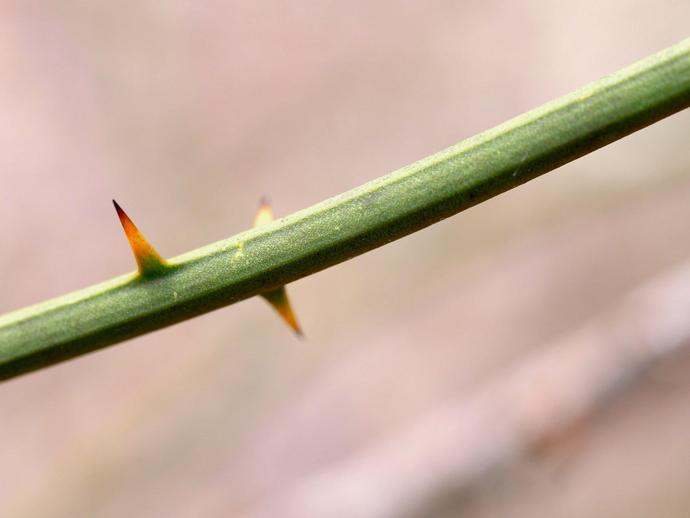April 8, 2021
Ben here with today's edition of #BenInNature presented by our friends at Carter Bank & Trust!
Ahh, Smilax, my old foe; tearer of pants, scratcher of arms, inspirer of swear words. If you spend time out in the woods in southwest Virginia, you're probably intimately familiar with the genus Smilax, which contains flowering vines that are covered in thorns and grow heart-shaped leaves. This particular plant is probably Smilax bona-nox, also known as catbrier, saw greenbrier, and "tramp's trouble."
I most often find Smilax growing out in the woods, usually climbing up trees and blocking paths, but if left to its own devices, it can form dense shrubs that coalesce into nearly-impenetrable thickets. It flowers in May and June and produces clusters of white and green flowers. If the flowers are successfully pollinated, they'll become red or black berries.
I'll grudgingly give Smilax credit for those berries, as they stay on the plant through the winter and serve as an important food source for birds and other woodland critters. Of course, the seeds pass unharmed through digestive tracts, which means more Smilax come spring. Combined with the fact that the plants can grow back even after being cut down or burned, this is one tough plant to get rid of.
While Smilax thorns may not be my favorite thing in the world, they do serve a couple of important purposes. They help the plant latch onto trees and bushes and climb higher, and they also protect small animals from predators that don't want to get thorns in their face. Additionally, the foliage is a good food source for deer, not to mention a variety of butterflies.
ABOUT #BenInNature
Social distancing can be difficult, but it presents a great opportunity to become reacquainted with nature. In this series of posts, Administrator of Science Ben Williams ventures outdoors to record a snapshot of the unique sights that can be found in the natural world. New updates are posted Monday - Friday, with previous posts highlighted on the weekends. This series of posts is made possible thanks to the support of VMNH Corporate Partner Carter Bank & Trust (www.cbtcares.com)
NATURE PHOTO IDENTIFICATIONS
If you discover something in nature that you would like help identifying, be sure to message us right here on Facebook with a picture (please include location and date of picture) and we'll have our experts help you identify it!

 Hours & Admissions
Hours & Admissions Directions
Directions

